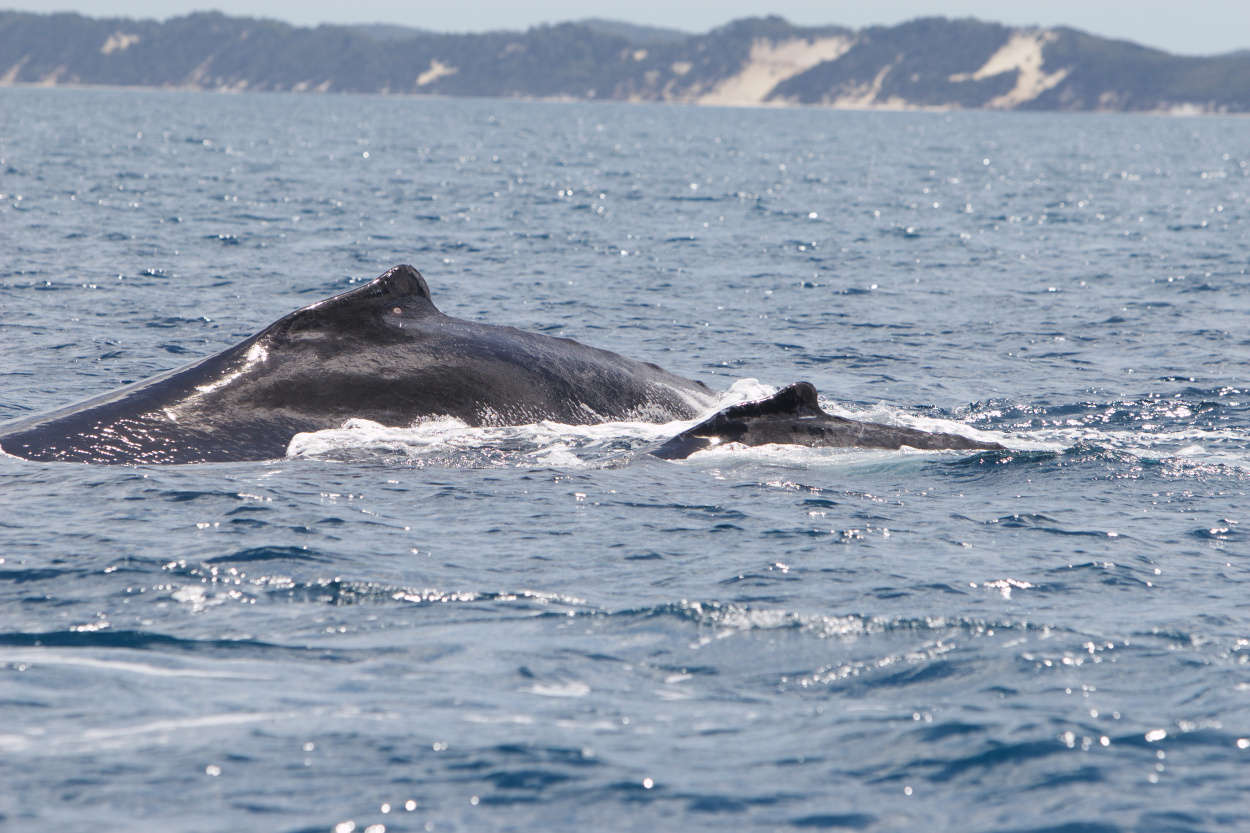One very special humpback whale and her calf made the news this whalewatch season, and it isn’t the first time. Not only is Nala a celebrity in the Hervey Bay whalewatching community and a frequent visitor to the area, she is also a long-time mother and a real-life example of how our research at Pacific Whale Foundation is making a difference.

Tail flukes of Nala 
Nala and a calf
Ask anyone in the Hervey Bay whalewatching community who Nala is, and almost anyone will have heard of the famous whale. Her name was given to her in 1996 by a group of students at Hervey Bay High school who, going along with a Lion King theme, named her calf that year Simba. She has since been dubbed the “icon” whale of Hervey Bay and over the years, Nala has earned the respect and admiration of many.
One thing that sets Nala apart from other whales is her reputation as a standout mother. Pacific Whale Foundation researchers have sighted her in 13 different years, 11 of which were with a calf (1988, 1991, 1996, 1998, 1999, 2000, 2002, 2006, 2009, 2010, and 2015) and two of which were without a calf (1997 and 2008). Nala was also recorded with a calf by the Oceania Project in 1992 and 2003 and was sighted with a calf this year (2017). This means that she has had at least 14 calves!
Why is all of this important? Nala is a prolific breeder and one of the few whales who is actually able to conceive in consecutive years, which is known as postpartum estrus. Her ability to produce and raise so many calves is very important in helping the East Australian humpback whale population continue to increase. It also shows just how important photo-identification research is in allowing us to better understand the life histories of these whales and apply what we know in order to work toward healthier populations of whales and healthier oceans.
At Pacific Whale Foundation, we encourage the public to become an active part of what we are doing. If you find yourself along Australia’s east coast, keep an eye out for Nala as she continues her southward migration to Antarctica. You can even play the role of research assistant and take your own fluke photos, whether they are of Nala or another humpback whale, and submit them to our Research Department. Nala is also one of several whales that can be adopted, with all proceeds going directly toward continuing our research worldwide.
If you are interested in learning more about our research at Pacific Whale Foundation we encourage you to visit our website or leave a comment below.
